
Chord – 4 ft. 6 in.
Length – 17 ft. 5 in.
Height – 6 ft.
Wing Area – 108 sq. ft.
Useful Load – 300 lbs.
Gross Weight – 800 lbs.
Fuel Capacity – 15 gals.
Home | Location | Contact | Donate | Ace Aircraft, Inc.
1930s - The Golden Age of Ace Aircraft
February 1930 – The closed cockpit Baby Ace appears in Aero Digest. The article claims that this Baby Ace was designed by O. G. Corben and built by the Ace Aircraft Manufacturing Corporation in Wichita, KS. It is powered by the 40 hp Szekley engine. It has a top speed of 85 mph and a cruising speed of 70 mph. The aircraft is registered as NX386M. [1]
 |
|
| Span – 25 ft. 8 in. Chord – 4 ft. 6 in. Length – 17 ft. 5 in. Height – 6 ft. Wing Area – 108 sq. ft. |
Empty Weight – 500 lbs. Useful Load – 300 lbs. Gross Weight – 800 lbs. Fuel Capacity – 15 gals. |
1930 - Mr. Corben designs and builds the Junior Ace--a two-place version of the Baby Ace. This aircraft kit cost $1,374 assembled and $549 unassembled, less engine.
1930 - Mr. Corben starts the Corben Sport Plane and Supply Company in Peru, IN. The company produces one factory-built Junior Ace.
1930 - The US government places severe restrictions on the certification of homebuilt aircraft causing Mr. Corben to stop offering his Ace plans.
October 1930 - Mr. Corben moves from Wichita, KS to Madison, WI and serves as the new chief pilot and general manager of the Mid-West Air Transport Company and the Madison Airport. [2]
July 1931 – The Baby Ace appears in a full-page advertisement in Popular Aviation. The flyaway (ready-to-fly) prices for the open cockpit Baby Ace range from $999 with a Heath B-4 engine to $1,345 with a Salmson A-D-9 engine. The aircraft are built by the Corben Sport Plane & Supply Company of Peru, IN. [3]
August 1931 – The open and closed cockpit Baby Ace appears in Aero Digest. The article claims that the aircraft can be bought as a kit or ready-to-fly from the Corben Sport Plane and Supply Company of Peru, IN. They use engines from 35-40 hp. They had a top speed of 95 mph, a cruise speed of 80 mph, and a landing speed of 30 mph. The open-cockpit Baby Ace is registered as NX462W (SN# unknown). The closed-cockpit Baby Ace is registered as NX488N (SN# 13). [4]
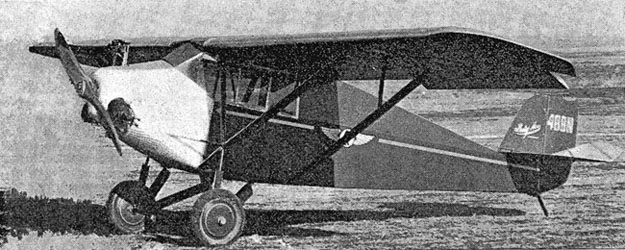 |
|
| Span (open) – 25 ft. 4 in. Span (closed) – 27 ft. 8 in. Length – 17 ft. 5 in. Height – 6 ft. |
Empty Weight (open) – 400 lbs. Empty Weight (closed) – 475 lbs. Useful Load – 300 lbs. |
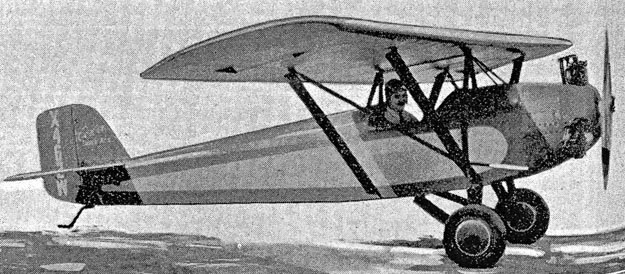 |
|
December 31, 1931 - Ace Aircraft Manufacturing Corporation's incorporation status is forfeited. [5]
February 1932 – The Corben Junior Ace appears in Aero Digest. The article states that the aircraft is designed by the Corben Sport Plane and Supply Company of Peru, IN. The article says that the aircraft converts from open to closed cockpit configurations, and the article shows the aircraft in both open and closed-cockpit configurations. The aircraft is powered by engines ranging in power from 40-45 hp. It has a top speed of 85 mph, a cruise speed of 75 mph, and lands at 28 mph. Both open and closed-cockpit Junior Ace aircraft in the article are registered as NX101V (SN# 14). [6]
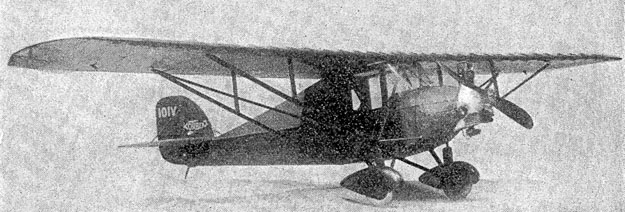 |
|
| Span – 36 ft. Chord – 5 ft. Height – 6 ft. 6 in. Length – 20 ft. |
Empty Weight – 520 lbs. Useful Load – 400 lbs. |
 |
|
May 6, 1932 - Mr. Corben flies his Junior Ace from Peru, IN to Madison, WI. The 275 mile trip takes Mr. Corben 3.5 hours and uses 10 gallons of fuel. [7]
May 8, 1932 - Corben Sport Plane Company moves from Peru, IN to 2002 East Johnson Street, Madison, WI. Mr. Louis F. Schoelkopf, a pioneer Ford automobile dealer and inventor, acquired the Madison Airport a month earlier and convinced Mr. Corben to move his company to Madison. Mr. Schoelkopf serves as President and Mr. Corben serves as Vice President and General Manager of the company. [8]
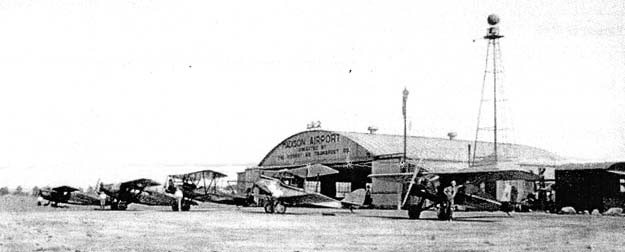
May 8, 1932 - On this day, Mr. Corben flies demonstration flights of his "Corben Ace Sport plane"--presumably the two-seat Junior Ace—in Madison, WI. [9]
1933 – Mr. Corben publishes plans and construction articles for the Baby Ace in Flying Manual. The cover states: “The Pilot and Builder's Handbook. Contains complete plans for Hickman Baby Seaplane – Pietenpol Sky Scout – Corben Baby Ace Cabin Monoplane – Gere Biplane – Longster Monoplane – Cross Country Twin Motor – The Long 'Harlequin' Motor." The closed-cockpit Baby Ace is registered as NX386M (SN# unknown). [10]
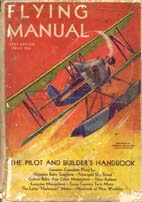
April-September 1933 - Mr. Corben publishes plans and construction articles for the Junior Ace as a six-part series in Popular Aviation. The aircraft photographed in the article holds registration number NX12817. U.S. Government records indicate that this aircraft was registered as Corben [Model] C, SN#101. [11]
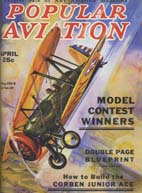 |
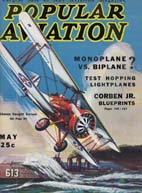 |
1934 - The Aeronautics Branch is renamed the Bureau of Air Commerce.
October 1, 1934 – Aeronautics Bulletin 7A is amended by the Civil Aeronautics Board.
1934 - Mr. Corben designs the single-place Super Ace sport plane.
December 1934 - Mr. Corben publishes an article about converting a Ford Model A engine for aircraft use in anticipation of the Super Ace plans and construction articles being published in Popular Aviation the following months. [12]
January-October 1935 - Mr. Corben publishes plans and construction articles for the Super Ace in Popular Aviation. The Super Ace is registered as NX13697 (SN# 341). [13]
April 1935 – The Corben Super Ace appears on the front cover of Popular Aviation magazine. [14]
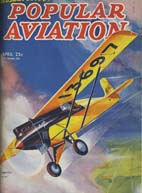
1935-6 - Mr. Jimmy Duddle and Mr. Eldon Seymour from Vernon, British Columbia build a Corben Junior Ace powered by a Salmson 9-cylinder radial engine. (The book incorrectly calls the aircraft a Senior Ace.) In 1936, this aircraft became the first homebuilt to fly across the Rocky Mountains. This Junior Ace is registered as CF-AOM. [15]
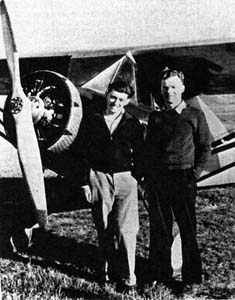
September 3, 1935 - The Junior Ace receives Approved Type Certificate 2-515 from the Bureau of Air Commerce for serial numbers 0135 and up. The Specification Basis is Aeronautics Bulletin 7A, Section 3. The aircraft that is certified holds registration number NC14807 (SN# 0135). U.S. Government records indicate that this aircraft was registered as Corben Junior Ace 6. [16][17]
1936 - Mr. Corben leaves Madison, WI. Mr. Walter Blake, Sr. takes over the management of the Madison Airport and the Corben Sport Plane Company. [18]
November 1, 1937 - The Bureau of Air Commerce publishes Civil Air Regulation CAR Part 04-Airplane Airworthiness which supersedes Aeronautical Bulletin 7A. Design type certificates and production certificates are now issued separately. As a result of this new regulation, all holders of Approved Type Certificates, such as Corben, are sent letters from the Bureau of Air Commerce offering to convert their Approved Type Certificates to the new Type Certificate. Approved Type Certificates that are not converted to the new Type Certificate will be expired.
1938 - After a year of effort, Mr. Jack Coomber of Narromine, New South Wales, Australia, with the help of Mr. Wal Treseder builds a Corben Super Ace in the back of McCutcheon’s garage on Dandaloo Street. This is Narromine's first flying aircraft. [19]
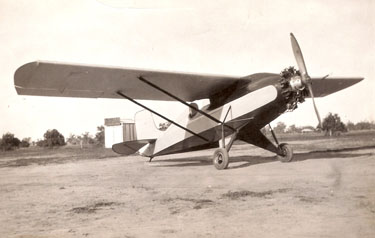
1938 - The Civil Aeronautics Act transfers federal responsibilities for non-military aviation from the Bureau of Air Commerce to a new independent agency called the Civil Aeronautics Authority (CAA).
June 14, 1938 – Mr. Blake represents the Corben Sport Plane Company at a meeting of the Aeronautics Board of Wisconsin in Madison, WI. There, Mr. Blake states that the company has three aircraft (a Baby Ace, Junior Ace, and Super Ace) one of which holds an ATC (the Junior Ace). Despite approximately $70,000 in business investments, the company has not operated since Mr. Corben left. The stockholders have not decided what they will do with the business. [20]
May 15, 1939 - Aircraft Owners and Pilots Association (AOPA) is founded.
1 “Baby Ace Cabin Plane,” Aero Digest, February 1930, p. 132
2 The Capital Times, October 11, 1930
3 Popular Aviation, July 1931
4 “Corben Baby Ace Monoplanes,” Aero Digest, August 1931, p. 58
5 Email from Kansas State Historical Society, June 2, 2009
6 “The Corben Junior Ace Monoplane,” Aero Digest, February 1932, p. 52
7 Wisconsin State Journal, May 8, 1932
8 Wisconsin State Journal, April 27, 1932
9 Wisconsin State Journal, May 8, 1932
10 Corben, O. G., “Building the Corben ‘Baby Ace’,” Flying Manual, 1933 Edition, pp. 37-55
11 Popular Aviation, April - September 1933
12 Corben, O. G., "The Corben Converted Ford 'A'," Popular Aviation, December 1934, pp. 377, 401
13 Popular Aviation, January - October 1935
14 Popular Aviation, April 1935, Front Cover
15 Corley-Smith, P, Bush Flying to Blind Flying, “Chapter 14, Growing Optimism.” pp. 207-8, 214
16 Juptner, J. (1993), U.S. Civil Aircraft Series, Volume 9 (ATC 801-ATC817) Plus Group 2 Section Master Index, TAB Aero: Blue Ridge Summit, PA
17 U.S. Department of Commerce, Bureau of Air Commerce, Air Regulation Division, Inspection Handbook, Chapter XVII Approved Aircraft, March 18, 1936, p. 49
18 Personal Correspondence from Mr. Fred Leidel, May 27, 2009
19
http://www.narrominenewsonline.com.au/news/local/news/general/corben-super-ace-returning-to-join-museum-collection/1433521.aspx
20 In the Matter of Proposed Rules and Regulations Relating to Indentified Aircraft, Aeronautics Board of Wisconsin, June 14, 1938

MUSEUM
Page last updated: Thursday, November 24, 2011